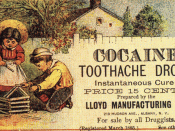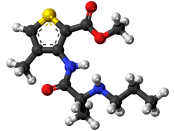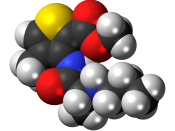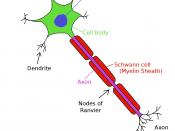In the Journal Article Review titled ÃÂEfficacy of Articaine: A New Amide Local Anesthetic,ÃÂ authors Malamed, Gagnon, and LeBlanc (2009) seek to determine if the safety and efficacy of articaine compares to that of lidocaine for local anesthetic purposes. According to the authors, ÃÂArticaine has many of the physiochemical properties of the most commonly used local anesthetics (lidocaine, mepivacaine, and prilocaine) with the exception of the aromatic ring (and it) effectively penetrates tissue and is highly diffusible (p. 636).ÃÂ The authors sought to prove that articaine is as effective or more effective at managing dental pain and performing for long procedures, while maintaining the patients safety. The focus of the study was to find more options for pain control in dentistry. According to the study, Articaine is differentiated from other amides in that it contains a thiophene ring and an additional ester ring; therefore, it is biotransformed in the plasma and the liver and excreted by the kidneys.
These factors make the drug a contraindication for patients with impaired liver and kidney function. However, the authors point out that it is these factors that increase plasma protein binding by 95 percent and increase liposolubility making the drug a very effective method of pain control. And like the above-mentioned anesthetics, articaine reversibly inhibits conduction of nerve impulses by blocking sodium and potassium channels during propagation of the nerve action potential.
The study concluded that there is no statistical difference between articaine and lidocaine for the management of dental pain. A wide range of patient demographics proved that the drug is safe among different age groups, genders, and races. The onset and duration tested to be similar to lidocaine. And finally, the pain control was proven to be as good or better than that of lidocaine; therefore, the use of articaine in carefully chosen patients is a good choice for use in local anesthesia.
I felt that the study was conducted very well. The researchers had a large test group and tested many different variances in relation to the two drugs. I approved of their methods and materials since they were so thorough. I liked that the focus of the research was to find other methods of controlling dental pain, rather than just comparing the two drugs based on their efficacy and safety. As we all know, each patient comes to us with different needs. A drug that works for one patient may not work for another patient; therefore, it is important to explore other possibilities and not limit ourselves as clinicians to that which is familiar because it is convenient. We must make a concerted effort to treat each patient as unique and always try to look at things from the patient perspective. The clinical significance for the study is well founded since the basis is to find an alternative anesthetic. The data encourages more people to seek care and possibly lead to a more painless dental visit.
ReferencesMalamed, S., Gagnon, S., LeBlanc, D. (2000). Efficacy of Articaine: A New Amide LocalAnesthetic. Journal of American Dental Association, 131; 635-642.





